Brand guidelines, sometimes referred to as your brand book, communicate the key principles for using your brand. Whether the audience is internal, community partners & affiliates, or your library’s patrons, the guidelines include the methods and tools used to create, maintain, and grow a standardized, consistent message that conveys your library’s vision and mission.

Typically, brand guidelines include the following sections:
- Identity - the library’s core values and messaging, including goals, vision, and mission statement
- Assets - logo mark and logo type, including guidelines for orientation, full-color versus solid, logo clear space, and minimum/maximum sizes
- Color Palette - the approved color palette for your library, as well as any usage guidelines that might apply
- Typography - your brand’s fonts and how to use them
- Imagery - examples and ideas for using photography and graphics within your brand
- Style Guide - a complete guide for speaking or writing about your library, glossary of terms, spelling guide, etc.
- Usage - some examples of the brand “in the wild,” including stationery, posters and signage, outdoor advertising, vehicle wraps, and more
Some organizations prefer very strict and thorough brand guidelines, while other prefer to give their team a bit of flexibility to work within the brand while also maintaining a high level of creativity. Here at Library Market, we prefer the latter option. We have found that libraries typically have very creative people on staff, and the resulting brand work can be very engaging while still working within the boundaries set by the brand guidelines.
No matter the style of brand guidelines your organization has chosen, you will want to remember these key items while creating materials:
Rules vs Guidelines
Your brand guidelines consist of two different types of guidance - rules and guidelines. Typically, the identity, assets, color palette, and typography sections are very clear rules, whereas the imagery, style guide, and usage typically include a bit of flexibility to allow for creativity. It’s always good to be very clear, either through staff training or within the brand guidelines themselves. No matter how strict or flexible you choose to be, it is imperative that you have a staff member or team of staff members who are very comfortable with what the brand is and how to implement it correctly.
Consistency
Anytime someone engages with your brand, they form a perception of your organization, sometimes without very much context. This might be from something as small as a business card or postcard or as large as a bus wrap or billboard. In either of these cases, the key to projecting the correct image is consistency.
Keep the Focus
Building upon consistency, you also want to make sure your team is taking advantage of the brand guidelines to create a recognizable, branded piece that both fits within the full system of branded materials and can also stand on its own. Remember, someone might be exposed to a single branded item, but if the piece is effective, they will remember it the next time they engage with your brand and build upon their previous experience. Always keep focused on the whole picture.
Recognizable & Reliable
If you are able to build a consistent, focused experience for your audience, your brand will become both recognizable and reliable. The public will come to expect a certain level of quality when they see materials produced by your library. For example, when scanning their environment, if they see your brand colors used in combination with your typography and imagery, they will instantly recognize it as something that is informative and useful.
Let’s take a look at a brand that most people will recognize immediately: the "Starbucks Creative Expression” microsite, a publicly available, digital version of their brand guidelines. You can quickly see how they have created a system of branded elements that are both independently recognizable, as well as work together to form a very clear image of who they are as a corporation.
Value
When a brand’s identity is cohesive, it increases the brand’s value. Following your brand guidelines allows your library to appear more professional and reliable. In addition, you are actively making it easier for other staff members to maintain the quality and integrity of your library’s image well into the future.
Does your library have a set of brand guidelines that has furthered your library’s mission? If not, we would love to chat with you about your library’s brand. Contact Library Market today!

